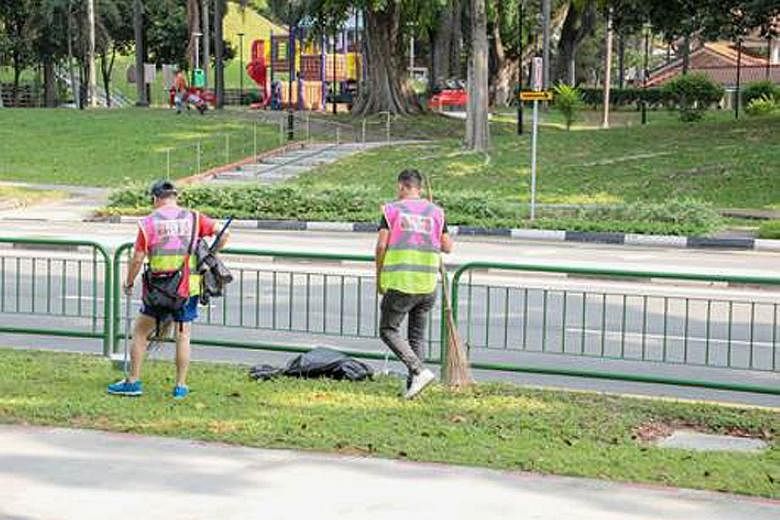Drop rubbish in Singapore and you might be dropping any fashion credibility you ever had.
The lurid yellow vests worn by littering offenders served with corrective work orders (CWOs) and made to clean the streets have been "revamped" by the National Environment Agency (NEA) to make them even more "readily distinguishable", in a bid to deter offenders.
The garish garments, now in an eye-catching luminous pink and yellow combo, are among a range of measures being introduced by the NEA, which is also turning to technology to ensure the Republic remains rubbish-free.
Last year, it used cameras and video analytics to catch culprits and issued about 39,000 fines for littering - 7,000 more than in 2017.
The number of CWOs issued rose by 30 per cent, from about 2,000 cases in 2017 to about 2,600 last year.
Giving the figures yesterday, NEA said the new technologies have helped with enforcement operations at well-known littering and smoking spots, and also helped to optimise manpower.
Under the Environmental Public Health Act, the maximum fine for a littering offence is $2,000 for the first court conviction, $4,000 for the second, and $10,000 for the third and subsequent convictions.
Recalcitrant offenders prosecuted in court may be issued a fine and/or CWO.
Introduced in 1992, the CWO requires recalcitrant offenders to clean public areas for a minimum of three hours, up to a maximum of 12 hours. NEA said: "This regime serves to increase recalcitrant offenders' awareness of the impact of littering, as well as experience the difficulties faced by cleaners."
The design of the CWO vest was revised to raise visibility and increase its deterrence effect, it said, adding that it has been working with partners such as the Public Hygiene Council to encourage members of the public to exercise social graciousness.
More than 410 people have been trained under a Community Volunteer Programme to educate littering offenders to be more socially responsible.
The volunteers have engaged more than 9,900 individuals for environmental offences, including littering.
The agency added: "Everyone has a part to play in upholding high standards of cleanliness and public health in Singapore.
"NEA will continue with its educational and enforcement efforts to take personal ownership in keeping Singapore clean."


